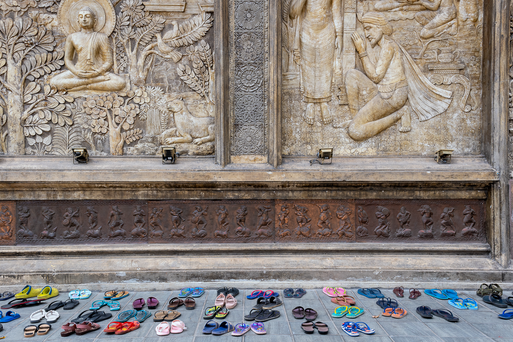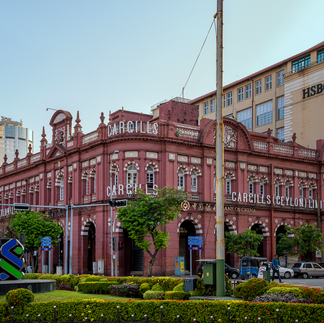Colombo, Sri Lanka: March 17 - 19, 2024
- Cecilia Clark

- Mar 20, 2024
- 3 min read
Updated: Apr 2

Arriving in Colombo (Sri Lanka's capital) around 3:00 am, we had some sleep to catch up on. We were booked into the comfortable 8-room Uga Residence which was the home of a wealthy barrister/lawyer in the 19th century. The hotel was just a couple of blocks from the Gangaramaya Buddhist Temple and as we had no plans for the first 1-1/2 days during our stay, we checked it out.
We were not prepared for how oppressive the heat and humidity were this time of year. After strolling around the Temple and its museum we planned to walk a little further to the associated temple on a nearby lake. Unfortunately, a Tuk Tuk driver zeroed in on us and in our overheated/sleep deprived state we agreed to give him $5 USD (we didn't have any rupees) for a tour of all the sites he showed us on a fold-out postcard assortment. He drove by a couple of places then told us that a shop would give him a free liter of petrol if he brought us to the shop. We relented. It was a jewelry shop. We walked into the shop, said we weren't interested, walked out, and told the driver we wanted to continue the tour. He drove us back to our hotel where he demanded the $5 and wouldn't leave. The hotel told us we had overpaid, but we paid up just to get rid of him. Lesson learned!
The next morning we left the hotel around 6:00 am to beat the heat and to walk to The Seema Malaka (Floating Temple) designed by the renowned Sri Lankan architect Geoffrey Bawa. The temple is built on platforms that appear to float on the shallow, tranquil waters of Beira Lake. The lake, surrounded by high-rises, remains serene enough for a bird habitat. The temple space is used for meditation and religious ceremonies.
Back at the Gangaramaya Buddhist Temple, a wedding party was having photos taken in the relative cool of the morning. We took another stroll through the various temple buildings and the museum which must contain more than 1000 Buddha statues.
The hotel staff suggested we might like to visit the house museum of architect Geoffrey Bawa and they arranged an air conditioned taxi to take us there. Bawa's minimalist style incorporated local materials and blurred indoor and outdoor spaces to promote natural ventilation and a sense of openness (Wikipedia). The tour was enjoyable and we would become more familiar with this "Outside/In" approach as our vacation progressed.
After the Geoffrey Bawa tour, we met up with our tour guide and an insider guide Mark Forbes for a tour of "old" Colombo. Most of the buildings of interest had colonial roots dating back to the Dutch or the British eras. A 30+ year civil war, terrorism, the 2019 ISIS-related terrorist suicide bombings, the pandemic, and the recent economic downturn all contributed to the emptying of downtown Colombo and a move by many business to suburban areas. Some of the colonial buildings were in the process of renovation when the pandemic hit. Now nature is taking control of the vacant and/or unrenovated structures. As we strolled through this area, Mark pointed out groups of men who were surreptitiously selling/buying loose gemstones.
From Old Colombo, we walked to the Pettah district to see Jami-UI-Alfar Mosque (the red mosque) commissioned by the local Indian Muslim community and built 1908-1909. In 1975 adjacent properties were acquired and now the mosque can hold 10,000 worshipers. A vibrant market surrounds the mosque.
From the Pettah district, I requested we drive to Galle Face Green so I could see the sun set on Sri Lanka. The sun was just inches from dipping below the horizon, but the sea breeze and evening light were beautiful. Galle Face Green is where Sri Lankans come to fly kites, meet friends, and just enjoy the coolness after a brutally hot day.

Tomorrow we fly to Polonnaruwa.


















































Comments